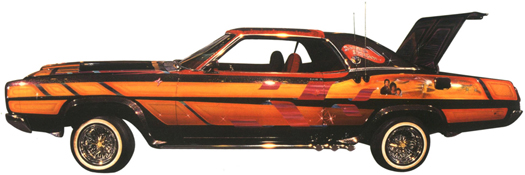
One artifact presents countless possibilities for exploring the past, but what kinds of stories can two artifacts—or three, or five, or a dozen—tell together? Museum exhibitions are places to find out. The art of the exhibition is the art of selection and juxtaposition, of choice and context. Juxtaposed one against the other, multiple artifacts generate stories more interesting, more complex, more provocative than any single object can tell. Artifacts comment on and raise questions about others, encouraging viewers to compare and contrast styles, functions, and meanings. Displayed side by side, artifacts can suggest causes and consequences, changes over time, or conflicts and inequalities. As museumgoers contemplate a group of artifacts, they begin to form connections, discern patterns, make sense of them as a whole. What ties the artifacts together? What is the story that links them? What does it all mean? Juxtaposition, a powerful storyteller and generator of meaning, can open up history in ways never imagined.
Consider a single object—for example, a Model T Ford. During the 1960s, a Model T Ford was displayed at the first-floor entrance to the Museum of History and Technology. What did this car mean? What story did it tell? For some visitors it may have brought back memories of a car they or someone in their family had once owned. For those without a personal connection to a Model T, the antique car might have simply represented “the past.” As an object standing alone, the Model T depended largely on viewers’ imaginations for its meaning and value.
But what happens when a second vehicle is placed next to the Model T? If the second object is a horse-drawn wagon from 1880, the Ford becomes a symbol of great technological progress. The two objects together suggest that in just a few decades clever folks invented this amazing car. On the other hand, if the second object is an automobile from a few decades after the Model T, the older car suddenly seems primitive, a reminder of how far automobile technology has advanced. Meanwhile, a different car from that same period can also tell a range of stories. A Rolls Royce makes the Model T look tiny and frail and raises the question of who can afford what car. A Chevrolet—the car that General Motors introduced to compete with the Model T—begins to tell a story about the changing car market, the shift in focus to sales and design, and Ford’s failure to keep up. In turn, putting the Model T next to a radically different kind of car—perhaps a 1970s low rider from New Mexico, lovingly customized—could inspire visitors to contemplate the meaning of automobiles generally in American culture.
Juxtaposing the Model T Ford with objects other than vehicles opens up another wide range of possibilities. A piece of the factory assembly line initiates a story of Ford’s innovation in production, while a mannequin holding a tool from the production line suggests a story of labor. An array of different kinds of tools shifts the focus to the skills of the mechanic or the car owner. A jacket, scarf, and goggles announce a story on driving and fashion, while a variety of sheet music featuring the Model T suggests the automobile’s place in popular culture. The Model T hooked up to a washing machine—one of the many ingenious uses people found for the cars—may lead to a story on rural life, housework, or gender relationships.

Model T Ford on display at the entrance to the Museum of History and Technology in 1971 and in the Road Transportation Hall, National Museum of American History, in 1992. A single artifact can tell many stories. Its context within an exhibition—displayed with an array of other artifacts, within a period setting, against a backdrop of images—helps bring those different stories to light. Since this 1913 Model T was donated in 1935 by Harvey Carlton Locke (see this page), the museum has displayed and interpreted the car in a variety of ways: as a technological milestone, as an icon of American history, and as a cultural artifact. (photo credit 36.1)


“Dave’s Dream” low rider, 1978. The 1990 acquisition of this low rider, a 1969 Ford LTD customized by David Jaramillo and friends in Espanola, New Mexico, caused some controversy at the National Museum of American History. Acquired for American Encounters, the 1992 exhibition on New Mexico’s cultural history, it was dramatically different from previously collected automobiles, mainly standard models or prototypes. An example of technoloqy transformed into a work of art, “Dave’s Dream” was not an anonymous machine but an image of its owner’s cultural identity and personal tastes. (photo credit 36.3)
The point is simple: an artifact, properly couched—properly coached?—can tell a thousand stories. When artifacts enter the museum, opportunities are created for dialogue with other artifacts, representing other beliefs, values, and experiences. In exhibitions, curators bring objects together to construct a bigger picture, to raise and answer bigger questions about the nation’s past. Through juxtaposition new stories are told, new meanings are discovered, and new truths may be revealed.